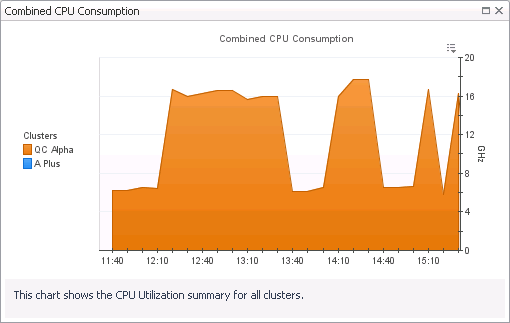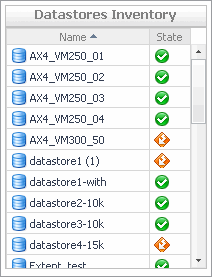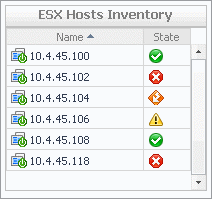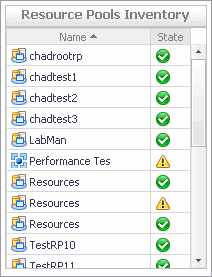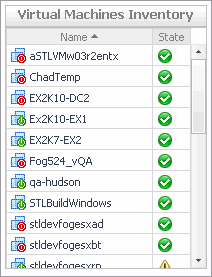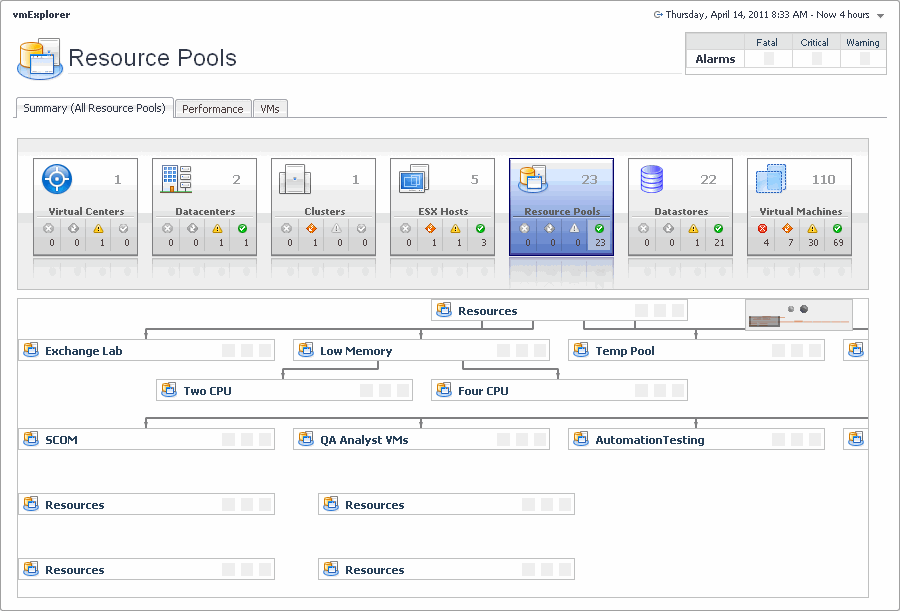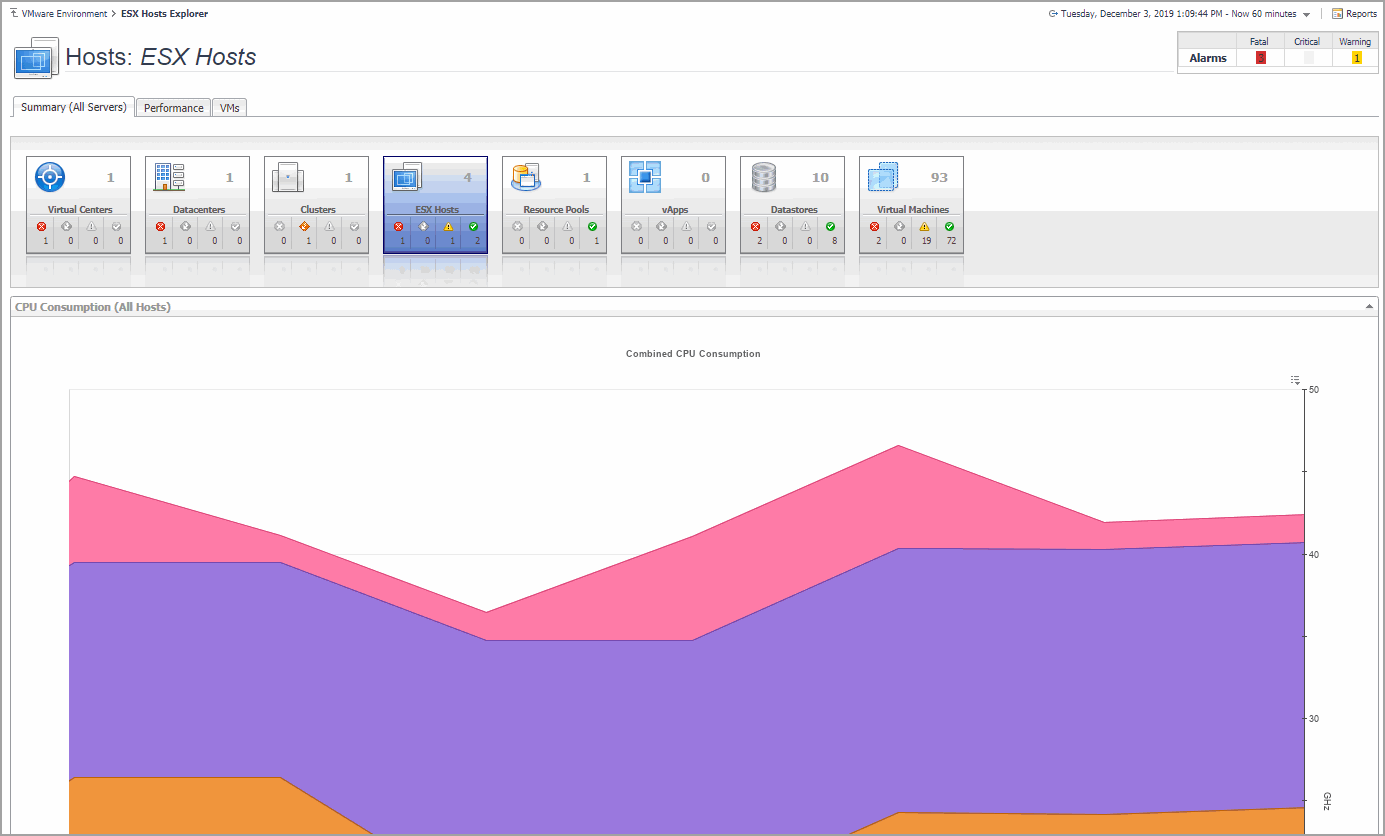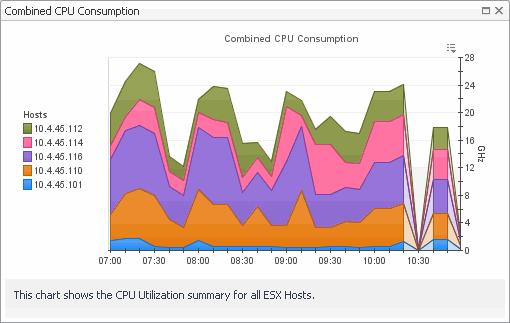Summary (All Clusters) tab
The Summary (All Clusters) tab shows a summary of system resources for all available clusters in a Virtual Center.
|
2 |
This view is made up of the following embedded views:
|
This tabular view lists the clusters that exist in the Virtual Center. | |||
| |||
| |||
| |||
| |||
| |||
| |||
| |||
|
Drill down on any cluster entry. The VMware Explorer refreshes, showing the cluster details on the Summary tab. |
|
Shows the combined percentage of the CPU usage for all clusters in the Virtual Center. | |||
| |||
|
|
The VMware Explorer’s Virtual Environment view displays a high-level overview of your virtual environment. The view has a tile for each object type: Clusters, Servers, and Virtual Machines. Each tile shows how many of the corresponding object instances there are in your virtual infrastructure, as well as the count of objects of that type in each of the alarm states (Normal, Warning, Critical, Fatal). | |||
| |||
| |||
| |||
| |||
| |||
| |||
| |||
| |||
| |||
| |||
|
Summary (All Datacenters) tab
The Summary (All Datacenters) tab shows a summary of system resources for all datacenters that currently exist in a selected Virtual Center.
|
2 |
On the Virtual Infrastructure view, that appears on the navigation panel, select the Datacenters node. |
This view is made up of the following embedded views:
|
Shows the combined percentage of the CPU usage for all ESX hosts in the system. | |||
| |||
|
|
This tabular view lists all datacenters that exist in a Virtual Center configuration. | |||
| |||
| |||
| |||
| |||
| |||
| |||
| |||
| |||
|
Drill down on any datacenter entry. The VMware Environment dashboard appears, showing the datacenter details on the Summary tab. |
|
This embedded view shows the same information as the Virtual Environment view appearing on the Summary (All Clusters) tab. See page 143 for complete information. |
Summary (All Resource Pools) tab
The Summary (All Resource Pools) tab shows a summary of system resources for all resource pools that currently exist in a selected Virtual Center.
|
2 |
On the Virtual Infrastructure view, that appears on the navigation panel, select the Resource Pools node. |
This view is made up of the following embedded views:
For complete information about this view, see Resource Pools Relationship Tree view .
This embedded view shows the same information as the Virtual Environment view appearing on the Summary (All Clusters) tab. See page 143 for complete information.
Summary (All Servers) tab
The Summary (All Servers) tab shows a summary of system resources for all ESX hosts that currently exist in a selected Virtual Center.
|
2 |
On the Virtual Infrastructure view, that appears on the navigation panel, select the ESX Hosts node. |
This view is made up of the following embedded views:
|
Shows the combined percentage of the CPU usage for all ESX hosts in the system. | |||
| |||
|
|
This tabular view lists all ESX hosts that exist in your environment. | |||
| |||
| |||
| |||
| |||
| |||
| |||
| |||
| |||
| |||
|
Drill down on any ESX host entry. The VMware Environment dashboard appears, showing the ESX host details on the Summary tab. |
|
This embedded view shows the same information as the Virtual Environment view appearing on the Summary (All Clusters) tab. See page 143 for complete information. |


